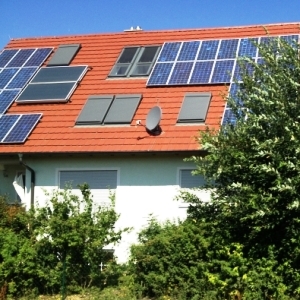The failures of a California solar plant highlight problems with net metering policies.
A multibillion-dollar California solar thermal plant is the latest example of a solar project taxpayers are paying for that doesn’t work, according to an expert; and concerns raised about the solar project tie into a larger conversation surrounding net metering policies that affect energy consumers in Arizona.
David Kreutzer, senior research fellow in energy economics and climate change at The Heritage Foundation's Center for Data Analysis, wrote an article on the $2.2 billion Ivanpah Solar Electric Generating System’s failure to meet its energy projections.
Ivanpah, which is owned by Google, NRG Energy and Brightsource, fell below its production target by 32 percent. Plant managers blamed the weather for the shortfall.
“The problem for Ivanpah’s customers (California power utilities) is that they planned on all those solar watt-hours to meet California’s renewable power mandates, which require that renewables produce a large and rising fraction of California’s electricity,” Kreutzer wrote. “That is why they pay so much more for Ivanpah’s output than for conventionally powered electricity.”
In 2011, the Department of Energy issued $1.6 billion in loan guarantees to Ivanpah, and despite the solar plant getting paid “two to three times as much per megawatt-hour as other solar power producers,” Ivanpah is seeking more than $500 million in grants to help pay off the guaranteed loans, Kreutzer said.
“One of the problems in general with solar and also with wind is it is not a dispatchable technology; you can’t turn it on and off,” Kreutzer recently told Arizona Business Daily. “The sun is shining or not. That is certainly not under anyone’s control, so you can’t turn it up or turn it down. So that means you get it when it comes, not necessarily when you need it.”
Although solar is slightly better than wind because the sun peaks in the middle of the afternoon – closer to the late afternoon peak demand than the wind, which typical peaks at night – solar users are getting paid for electricity that doesn’t always have value equivalent to the time when it’s provided.
But the bigger problem, Kreutzer said, is that net metering doesn’t cover the cost of maintaining the grid, the wires or the cost of maintaining reserve capacity during times when high demand is not being met, forcing reliance on other more expensive conventional production.
“Conventional production probably, on average, will be cheaper, but there are times when you need peaking power plants, usually natural gas combustion turbine, which will be more expensive,” Kreutzer said. “All of these things have costs you need to have to keep the grid up and running because you can’t, unless you want to return to sort of Third World levels of standards of living. You want electricity to be reliable up to 99.99 percent on (output) level and not the 85 percent level where everybody does without an hour of electricity per day. We don’t want that.”
What tends to happen is the costs associated with making sure the grid is available to transmit electricity and the costs for backup power supply to cover peak periods are shifted to people without solar panels on their houses, which makes electricity significantly more expensive for them. This has been the focal point of much of the controversy surrounding solar power use and net metering policies in Arizona.
“I have no great love for regulated utilities because it is not clear what incentives they have for cutting costs or being efficient or any of these things," Kreutzer said. "On the other hand, I am sympathetic to somebody who has to cover the cost of wires and peak power and so on.”
Kreutzer added that if people were going off the grid completely and installing their own batteries instead of relying on the grid, then net metering would make more sense.
“The problem with electricity is you can’t store it," Kreutzer said. "There are a few cases with pumped hydro in which you can; but in general, you can’t store electricity (meaning) that every second the kilowatt-hours going in have to equal the kilowatt-hours going out. The rooftop solar doesn’t help at all on balancing things.”
Net metering is subsidized and mandated in some states where a renewable portfolio standard exists, requiring utilities to meet a minimum fraction of their production from renewable energy. Wind is generally cheaper than solar, but sometimes there are limits placed on the fraction that can come from wind, Kreutzer said.
“It might be the utilities want a certain amount but don’t want the amount they are getting and they would rather pay a lower price than a higher price,” Kreutzer said. "I think there is a justification for their argument."

